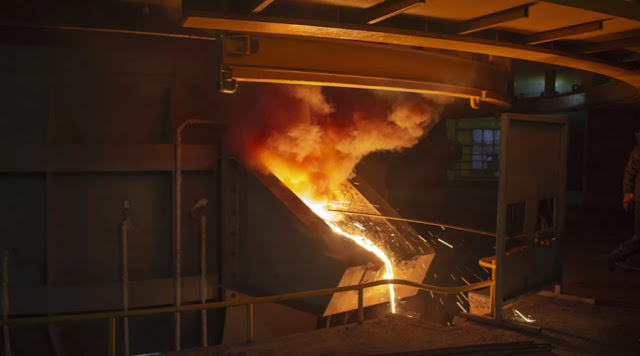Submerged Electric Arc Furnace Principle
Principle of submerged arc furnace: releasing the power of electromagnetic energy
In the field of metallurgical technology, the principle of submerged arc furnaces has become a revolutionary technology. This principle harnesses the power of electromagnetic energy to melt and refine a variety of materials, making it an essential tool for producing high-quality metals.
Submerged Electric Arc Furnace Principle
A submerged arc furnace (SEAF) works by generating an electric arc between an electrode and the charge. However, it differs from conventional electric arc furnaces in the positioning of the electrodes. In SAF, the electrode is immersed in a molten pool of the material being processed.
This unique design offers several advantages over traditional electric arc furnaces. First, the immersed electrode provides superior energy transfer to the molten pool, resulting in a more efficient melting process. Electrical energy is converted directly into thermal energy in the molten pool, ensuring rapid and even heating.
Additionally, submersible electrodes minimize the risk of electrode burnout and excessive electrode consumption. In a conventional electric arc furnace, the electrodes are exposed to the air and the intense heat generated during the arcing process. This can cause corrosion of the electrodes, shortening their service life and increasing operating costs. By immersing the electrodes, the SEAF principle significantly extends electrode life and reduces downtime and maintenance costs.
The submerged arc furnace principle also increases control over the refining process. The molten pool acts as a natural covering, preventing the loss of volatile elements and reducing the formation of undesirable impurities. This allows precise control of the chemical composition of the final product, improving the quality and consistency of the final material.
Another significant advantage of the arc furnace principle is its environmental sustainability. SEAF uses electromagnetic energy to reduce greenhouse gas emissions compared to traditional fossil fuel furnaces. The high temperatures reached in the molten bath enable efficient recycling and utilization of various waste materials, thereby promoting a circular economy.
The applications of the submersible furnace principle are diverse and span multiple industries. It is widely used in steel production and plays a vital role in the refining of carbon and stainless steel. The SEAF principle is also used in the production of ferroalloys, silicon metal, and even in the recycling of scrap metal. Its versatility and efficiency make it an attractive choice for a variety of metallurgical processes.
As with any technology, the arc furnace principle has its limitations. The high energy consumption and initial capital investment required to establish a SAF facility may pose challenges for some industries. However, the long-term benefits in operational efficiency, product quality and environmental impact often outweigh these initial disadvantages.
In short, the principle of ore thermal electric arc furnace has completely changed the metallurgical industry. Its innovative design uses immersed electrodes, which offer numerous advantages over traditional electric arc furnaces. From enhanced energy transfer and reduced electrode consumption to improved refining control and environmental sustainability, SEAF principles raise the bar for metals production. As the industry continues to prioritize efficiency and sustainability, the submersible arc furnace principle will undoubtedly play an important role in shaping the future of metallurgy.
If you have any questions or needs about IF, EAF, SAF, LF, LRF and other smelting furnaces, please feel free to contact our factory!
E-mail: saleswn@hanrm.com / inquiry66@hanmetallurgy.com (Daisy Zhai)
Tel / Whatsapp / Wechat: 0086 17791213533
Xi'an Hani Tech Co., Ltd.



Comments
Post a Comment